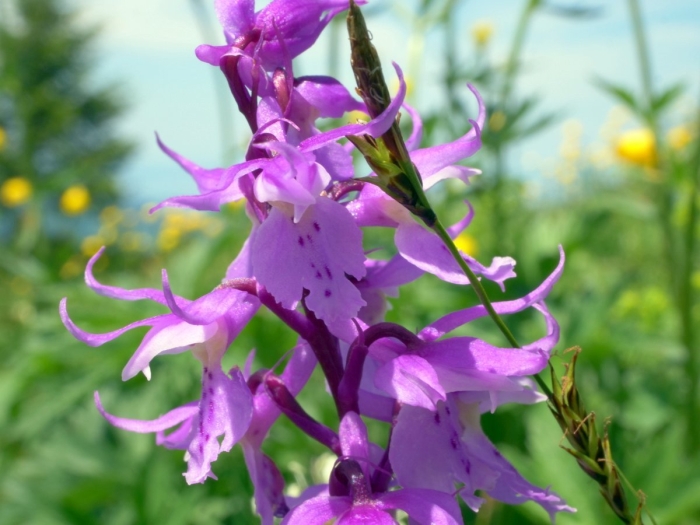Early-Purple Orchid
(Orchis mascula)
Early-Purple Orchid (Orchis mascula)
/
/

Wolfgang Jauch
CC BY 4.0
Image By:
Wolfgang Jauch
Recorded By:
Copyright:
CC BY 4.0
Copyright Notice:
Photo by: Wolfgang Jauch | License Type: CC BY 4.0 | License URL: http://creativecommons.org/licenses/by/4.0/ | Rights Holder: Wolfgang Jauch | Publisher: iNaturalist | Date Created: 2019-06-19T12:57:11-07:00 |























Estimated Native Range
Summary
Orchis mascula, commonly known as early-purple orchid, is a perennial herbaceous plant native to a variety of habitats including deciduous woodlands, grasslands, and open scrub areas across Europe, Northwest Africa, and the Middle East. It typically grows up to 24 inches tall, featuring green and purple stems, oblong-lanceolate leaves, and striking pinkish-purple flowers arranged in dense cylindrical spikes. The early-purple orchid blooms from April to June, with its vivid flowers attracting bees and wasps for pollination.
This species is valued for its ornamental flowers, which add a splash of color to woodland gardens and naturalized areas. It is often used in wildflower meadows and informal garden settings. In cultivation, Orchis mascula prefers moist, well-drained soils with rich organic matter, and it thrives in partial shade, mimicking its native woodland conditions. While not commonly grown in home gardens, it can be a rewarding plant for those interested in native and wildlife-friendly gardening. The tubers of Orchis mascula have been historically used to make salep, a nutritious flour, although this practice is less common today due to conservation concerns.CC BY-SA 4.0
This species is valued for its ornamental flowers, which add a splash of color to woodland gardens and naturalized areas. It is often used in wildflower meadows and informal garden settings. In cultivation, Orchis mascula prefers moist, well-drained soils with rich organic matter, and it thrives in partial shade, mimicking its native woodland conditions. While not commonly grown in home gardens, it can be a rewarding plant for those interested in native and wildlife-friendly gardening. The tubers of Orchis mascula have been historically used to make salep, a nutritious flour, although this practice is less common today due to conservation concerns.CC BY-SA 4.0
Plant Description
- Plant Type: Herb
- Height: 1.1-1.75 feet
- Width: 0.25-1.75 feet
- Growth Rate: Slow, Moderate
- Flower Color: Purple
- Flowering Season: Spring, Summer
- Leaf Retention: Deciduous
Growth Requirements
- Sun: Full Sun, Part Shade
- Water: Medium
- Drainage: Medium
Common Uses
Bee Garden, Butterfly Garden, Low Maintenance, Rock Garden
Natural Habitat
Deciduous woodlands, grasslands, and open scrub areas
Other Names
Common Names: Salep, Male Orchid
Scientific Names: , Orchis mascula, Androrchis mascula, Dactylorhiza mascula, Orchis mascula f. carnea, Orchis mascula var. marizii, Orchis mascula var. monsignatica, Orchis morio f. mascula, Orchis morio var. mascula, Orchis olbiensis var. balearica
GBIF Accepted Name: